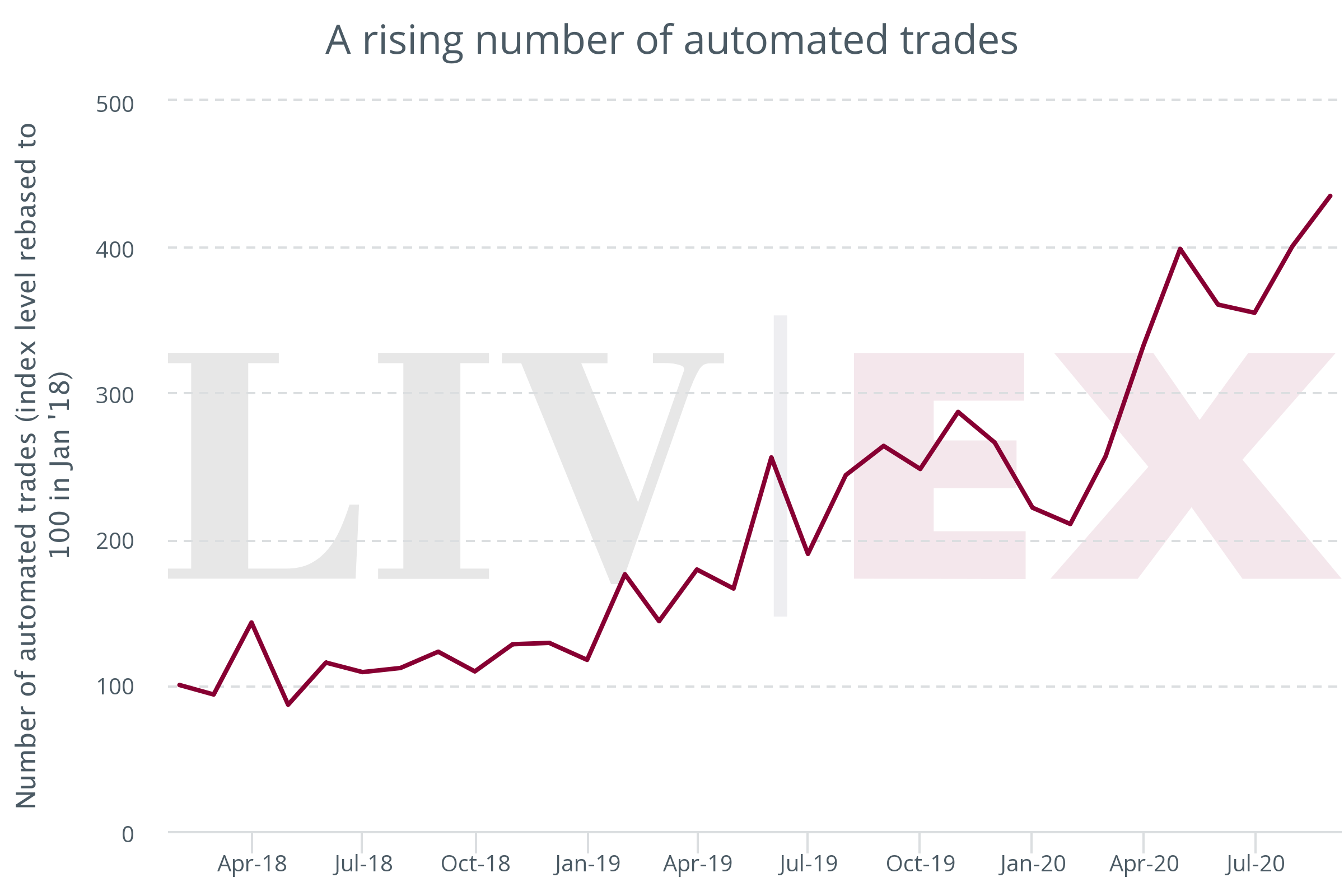The number of automated trades reached a new record high in August this year – historically a quiet month for the fine wine market. One of the reasons for this unprecedented rise during holiday season is that automated trading is not restricted to the working day and can happen even when merchants are away from the office.
As an independent case study on the impact of automated trading carried out last year pointed out:
“When looking at human trading, purchasing wine is dependent on office hours. Automated trading takes place all day and all week long, no matter if it is 3am on Wednesday or 11pm on Sunday.”
This is because all systems – merchants’ stock system, website, and Liv-ex – stay in sync automatically. The technology behind automation enables wine merchants to list stock on Liv-ex direct from their stock system or extend Liv-ex’s £45m+ offers to their customers, who can make instant purchases via their website.
Since the beginning of the year, automated trades have increased three-fold. The number of automated trades rose earlier in the year during lockdown as shoppers headed online. A broader offering from automation has been helping merchants gain competitive advantage. Merchants who use automation are able to offer more wine – a longer and more comprehensive list – without tying up additional capital in stock. One merchant was able to increase his list from 1,000 to 10,000 items while reducing his inventory by 80%.

Automation can be brought in a number of ways, at various levels of complexity depending on your business needs. You can download our short guide to automation, which outlines the various ways that wine merchants are automating, using the short form below.



